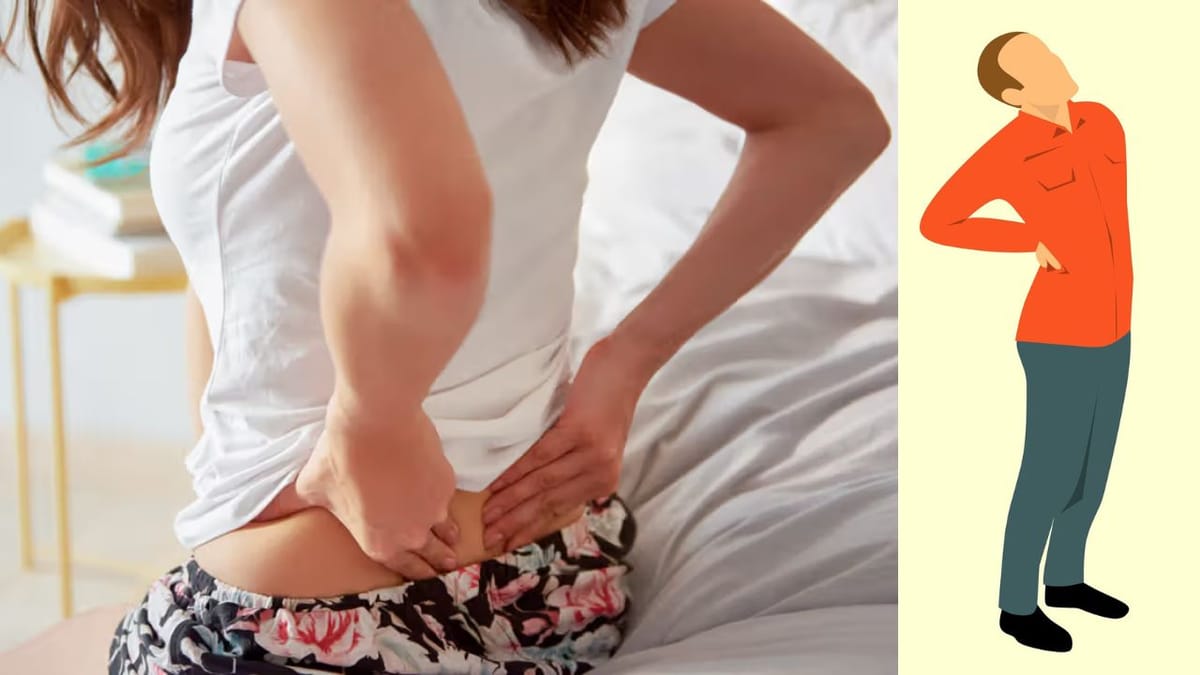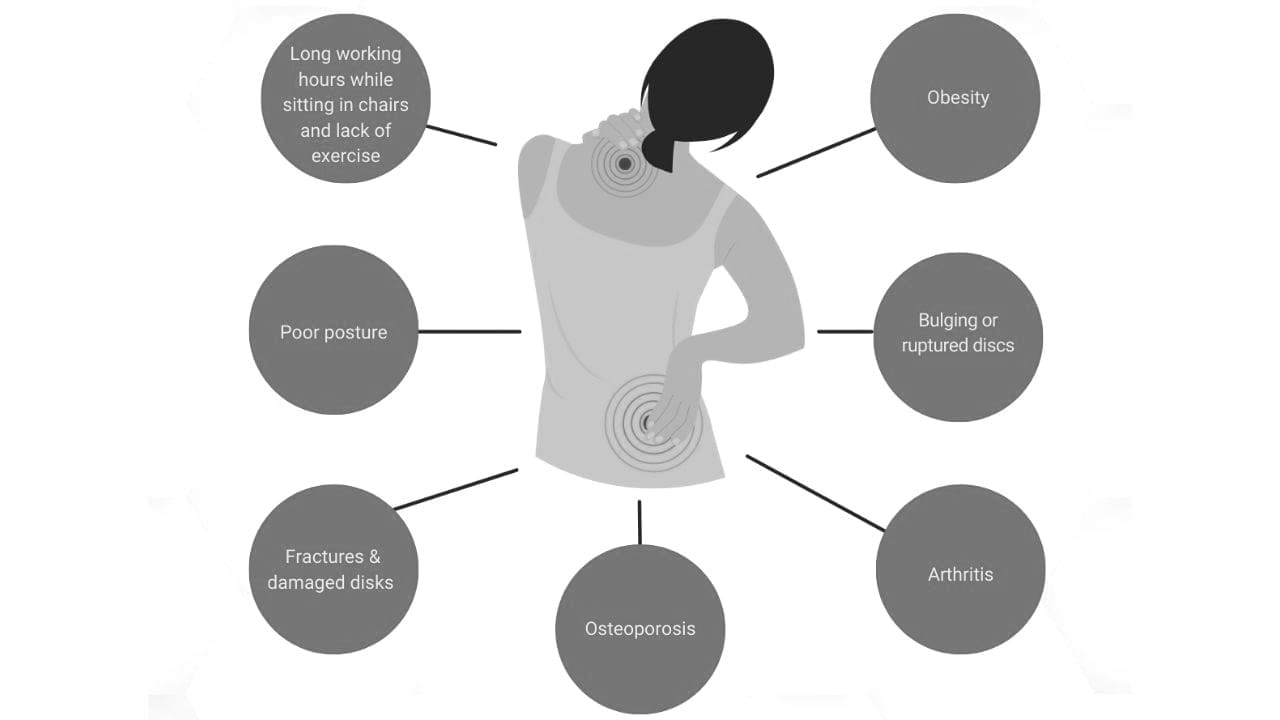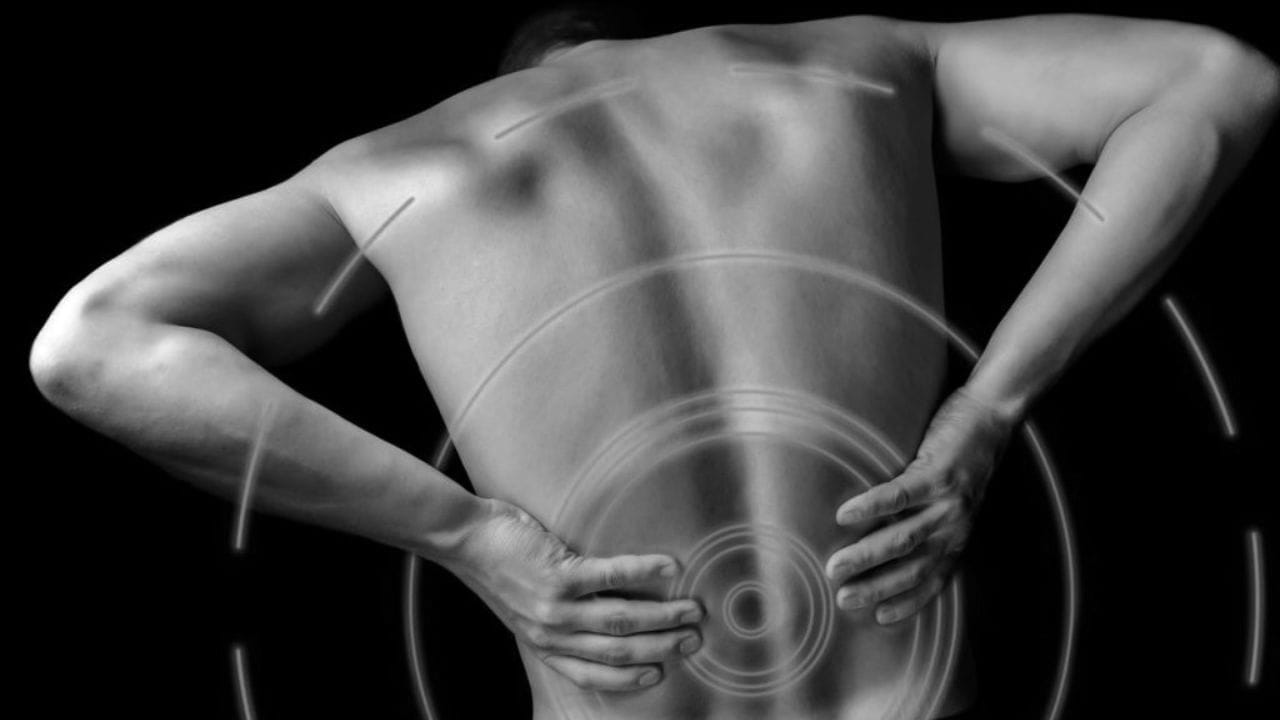Back Pain Self-Diagnosis - Step-by-Step Guide
Learn how to identify the root cause of your back pain with our comprehensive guide on back pain self-diagnosis with our guide.

Back pain is a common ailment that affects millions of people worldwide. It can be a result of various factors, from poor posture to underlying health conditions.
Understanding the nuances of back pain and learning how to self-diagnose can be empowering and help manage or alleviate discomfort. This article aims to provide you with a detailed understanding of back pain self-diagnosis.
In this article we'll talk about:
- How to identify different types of back pain and their potential causes.
- Gain insights into managing back pain through self-care strategies.
Understanding Back Pain
Back pain can be classified into two main types: acute and chronic. Acute back pain is sudden and intense, often resulting from an injury or heavy lifting. It typically lasts for a few days to weeks.
Chronic back pain, on the other hand, persists for more than three months and may be due to factors like degenerative diseases, poor posture, or repetitive stress.
Recognizing the type of back pain you're experiencing is the first step in self-diagnosis.

Acute pain usually has a clear cause and is often accompanied by symptoms like muscle spasms or restricted movement.
Chronic pain might be more diffuse and can be associated with symptoms like a dull ache or pain that comes and goes.
Source of Back Pain
To begin self-diagnosing your back pain, it's important to pinpoint the exact location of your discomfort.
Is it centered in the lower back, or does it radiate into your legs?
Is the pain localized in the upper back, neck, or shoulders?
Lower back pain is often related to lumbar strain or sciatica, while pain in the upper back could be linked to poor ergonomics or muscle overuse.

Pay attention to what activities exacerbate your pain. For instance, if bending over or lifting objects worsens the pain, it could indicate a herniated disc.
If the pain is relieved by rest and aggravated by standing or walking, it might suggest spinal stenosis.
Posture
Poor posture is a common culprit behind back pain. Slouching or hunching over a desk can put undue stress on the spine, leading to discomfort.
To self-diagnose posture-related back pain, observe your stance in a mirror. Is your spine aligned, or do you notice any slumping or leaning?
Correcting your posture can often alleviate back pain. Ensure that when sitting, your feet are flat on the floor, your back is supported, and your computer screen is at eye level. When standing, keep your weight balanced on both feet and your shoulders back.
Symptoms of Serious Conditions
While most back pain is not indicative of a serious condition, certain symptoms should prompt immediate medical attention.
These include numbness or tingling in the extremities, loss of bladder or bowel control, and severe pain that does not improve with rest.
These symptoms could signal conditions like cauda equina syndrome or a spinal infection, which require urgent care.
If you experience any of these alarming symptoms, do not delay seeking professional medical advice. Self-diagnosis is not a substitute for a thorough evaluation by a healthcare provider.
Tools and Techniques
Several self-assessment tools and techniques can aid in back pain self-diagnosis. One method is the "wait and see" approach, where you monitor your symptoms over a few days to see if they improve with rest and over-the-counter pain relief.
Another technique involves performing gentle stretches or exercises to determine if your pain is muscular.
Keep a pain diary to track the severity of your pain, its location, and any activities that trigger or alleviate it.
This information can be invaluable in identifying patterns and potential causes of your back pain.
Managing Back Pain at Home
Once you've identified the likely cause of your back pain, there are several strategies you can employ at home to manage it.
Heat therapy, such as a warm bath or heating pad, can soothe stiff muscles and improve blood flow. Cold therapy, like ice packs, can reduce inflammation and numb sore areas.
Incorporating gentle exercises and stretches specifically designed for back pain relief can also be beneficial.
Focus on strengthening your core muscles, which support your spine, and maintain flexibility in your back.
The Importance of Lifestyle Changes
Long-term management of back pain often involves making lifestyle changes. This includes maintaining a healthy weight, as excess body weight can strain the back.
Regular physical activity is also important, as it keeps the muscles that support the spine strong and flexible.
Consider ergonomic adjustments to your workspace and ensure that you take frequent breaks to stretch if you have a sedentary job.
Additionally, quit smoking if you do, as it can impede blood flow and exacerbate back pain.
Alternative Therapies and Treatments
For those seeking additional relief, alternative therapies may offer some benefit. Acupuncture, massage therapy, and chiropractic care are popular choices that some individuals find helpful for back pain.
Always consult with a healthcare professional before starting any new treatment to ensure it's appropriate for your specific condition.

Yoga and Pilates are also excellent options for improving flexibility and core strength, which can help prevent and alleviate back pain.
These practices also promote relaxation and stress reduction, which can have a positive impact on pain levels.
When to Consult a Professional
Self-diagnosis has its limits, and it's crucial to know when to seek professional help. If your back pain is severe, persistent, or accompanied by other symptoms like fever or unexplained weight loss, it's time to consult a healthcare provider.
Additionally, if you've had a recent injury or fall, a medical evaluation is necessary to rule out fractures or other serious injuries.
Remember, a professional diagnosis is essential for proper treatment, especially if your self-diagnosis efforts have not led to improvement.
Summary
Back pain self-diagnosis involves understanding the types of back pain, identifying the source, and recognizing when to seek professional help. Employing self-assessment tools, managing pain at home, and making lifestyle changes are all part of a comprehensive approach to dealing with back discomfort. Remember, while self-diagnosis can be a useful starting point, it should never replace professional medical advice, especially in cases of severe or persistent pain.
FAQ Section
Q 1: Can I Diagnose the Cause of My Back Pain at Home?
Answer: While you can assess certain aspects of your back pain, self-diagnosing the precise cause may be challenging. Common causes include muscle strain, poor posture, or overuse, but conditions like herniated discs or spinal issues require professional evaluation.
Monitor your symptoms, note patterns, and seek medical advice if the pain persists or worsens.
Q 2: What Self-Assessment Can I Perform for Back Pain?
Answer: Conducting a self-assessment involves observing the nature of your pain. Note its location, intensity, and any factors that worsen or alleviate it. Pay attention to associated symptoms like numbness or tingling.
If the pain is linked to a specific activity or if there's a history of injury, share these details with a healthcare professional for a more accurate diagnosis.
Q 3: Are There Home Remedies for Back Pain Relief Without a Formal Diagnosis?
Answer: Several home remedies can provide relief while awaiting a professional diagnosis. Applying ice or heat, practicing gentle stretches, and maintaining proper posture can alleviate mild to moderate back pain.
Over-the-counter pain relievers may also help. However, it's crucial to consult a healthcare provider for a comprehensive diagnosis and tailored treatment plan if the pain persists or worsens.
